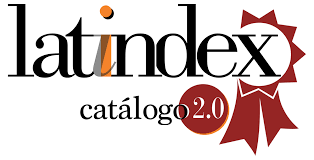Proposal of an adaptive system for traffic signalized intersections in the city of Jaén
DOI:
https://doi.org/10.37787/q0stj108Keywords:
Adaptive system, traffic signalized intersections, algorithm, program, delayAbstract
The objective of the research was to propose an adaptive system for traffic signalized intersections in the city of Jaén, based on algorithms and program execution. The design of the study was quantitative and experimental. Therefore, field data and primary sources were collected and analyzed to later build algorithms using the Knowlegde Discovery Databases methodology, going on to create an information base, train and validate with prediction algorithms the models that included selected variables, then predict times, which classify to a level of service; and finish with the development of a program using Visual Studio compatible with the generated algorithms, all this bearing in mind the Webster method and Highway Capacity Manual. The intersections were classified in their current situation with delays of 11.41 and 8.32 seconds, and levels of service "B", and "A"; two high precision models using the RandomForest algorithm with R2 of 0.995 and 0.996, estimating delay times and optimal cycle lengths; and an adaptable executable program that calculates and optimizes delays, optimal cycles and levels of service. This system has an R2 of 99.55% with the RandomForest algorithm capable of estimating, improving, and automating the operability of a traffic-light intersection.
References
Ali, M. E. M., Durdu, A., Celtek, S. A., & Yilmaz, A. (2021). An Adaptive Method for Traffic Signal Control Based on Fuzzy Logic With Webster and Modified Webster Formula Using SUMO Traffic Simulator. 10.1109/ACCESS.2021.3094270
Alkandari, A., Al-Shaikhli, I. F., & Alhaddad, A. (2014). Optimization of traffic control methods comparing with dynamic webster with Dynamic Cycle Time (DWDC) using simulation software. 2014 10th International Conference on Natural Computation (ICNC), 1071-1076. https://doi.org/10.1109/ICNC.2014.6975989
An, H. K., Awais Javeed, M., Bae, G., Zubair, N., M. Metwally, A. S., Bocchetta, P., Na, F., & Javed, M. S. (2022). Optimized Intersection Signal Timing: An Intelligent Approach-Based Study for Sustainable Models. https://doi.org/10.3390/su141811422
Balaji, P. G., German, X., & Srinivasan, D. (2010). Urban traffic signal control using reinforcement learning agents. IET Intelligent Transport Systems, 4(3), 177. https://doi.org/10.1049/iet-its.2009.0096
Bashiri, M. (2020). Data-Driven Intersection Management Solutions for Mixed Traffic of Human-Driven and Connected and Automated Vehicles. https://doi.org/10.48550/arXiv.2012.05402
Celis-Peñaranda, J. M., Escobar-Amado, C. D., Sepúlveda-Mora, S. B., Castro-Casadiego, S. A., Medina-Delgado, B., & Ramírez-Mateus, J. J. (2016). Control adaptativo para optimizar una intersección semafórica basado en un sistema embebido. https://doi.org/10.17230/ingciencia.12.24.8
Doçi, I., Duraku, R., & Hoti, B. (2022). Design Of Traffic Intersection Model And Regulation With Software And Microcontrollers. https://www.scientificbulletin.upb.ro/rev_docs_arhiva/full1a5_875407.pdf
Jiajia, L., & Xingquan, Z. (2020). Research on Fuzzy Control and Optimization for Traffic Lights at Single Intersection. https://www.china-simulation.com/EN/10.16182/j.issn1004731x.joss.20-FZ0498
Olayode, O. I., Tartibu, L. K., & Okwu, M. O. (2022, enero 25). Application of Adaptive Neuro-Fuzzy Inference System Model on Traffic Flow of Vehicles at a Signalized Road Intersections. ASME 2021 International Mechanical Engineering Congress and Exposition. https://doi.org/10.1115/IMECE2021-70956
Qian, R., Lun, Z., Wenchen, Y., & Meng, Z. (2013). A Traffic Emission-saving Signal Timing Model for Urban Isolated Intersections. Procedia - Social and Behavioral Sciences, 96, 2404-2413. https://doi.org/10.1016/j.sbspro.2013.08.269
Savithramma, R. M., Sumathi, R., & Sudhira, H. S. (2022). A Comparative Analysis of Machine Learning Algorithms in Design Process of Adaptive Traffic Signal Control System. 10.1088/1742-6596/2161/1/012054
Shaikh, P. W., El-Abd, M., Khanafer, M., & Gao, K. (2022). A Review on Swarm Intelligence and Evolutionary Algorithms for Solving the Traffic Signal Control Problem. IEEE Transactions on Intelligent Transportation Systems, 23(1), 48-63. https://doi.org/10.1109/TITS.2020.3014296
Shamlitskiy, Y., Popov, A., Saidov, N., & Moiseeva, K. (2023). Transport Stream Optimization Based on Neural Network Learning Algorithms. Transportation Research Procedia, 68, 417-425. https://doi.org/10.1016/j.trpro.2023.02.056
Shelby, S. G. (2004). Single-Intersection Evaluation of Real-Time Adaptive Traffic Signal Control Algorithms. Transportation Research Record: Journal of the Transportation Research Board, 1867(1), 183-192. https://doi.org/10.3141/1867-21
Wijaya, D. D. A., Luckyarno, Y. F., Utami, S. S., & Prasetyo, R. (2019). Analysis of Vehicle Waiting Time Efficiency Using Webster Method and Newton’s Divided Difference: Case Study at Mirota Kampus Intersection, Yogyakarta, Indonesia.
Zhang, H., Yuan, H., Chen, Y., Yu, W., Wang, C., Wang, J., & Gao, Y. (2021). Traffic Light Optimization Based on Modified Webster Function. Journal of Advanced Transportation, 2021, e3328202. https://doi.org/10.1155/2021/3328202
Published
Issue
Section
License
Copyright (c) 2024 Pakamuros Scientific Journal

This work is licensed under a Creative Commons Attribution-NonCommercial 4.0 International License.













